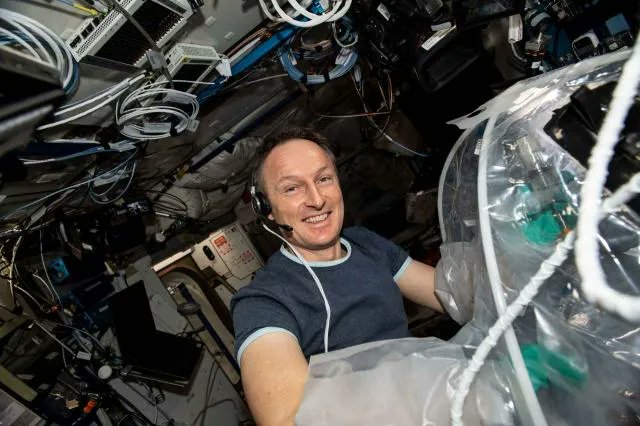Concrete is not the first material one usually thinks of when exploring space. Nor is it the focus of much cutting-edge research. The most common building material has been used by humanity for thousands of years. But surprisingly, little is still known about some of its properties, due in no small part to the limitations of the environments it can be tested in. Now, this most ubiquitous of materials will be tested in a new environment – the microgravity aboard the International Space Station.
The experiment, part of the “Cosmic Kiss” mission, will have German astronaut Matthias Maurer hand-mixing concrete in microgravity using a specially designed mixer no larger than the size of his hand and a giant inflatable bag. That obviously will not lead to much concrete, but its properties will be particularly telling to scientists.

Credit – Julian Mueller, University of Duisburg-Essen
Earth’s gravity plays a major role in the concrete curing process. As that process can take weeks or months, it is infeasible to eliminate gravity’s effects during that time anywhere on the Earth itself. Hence, the experiment aboard the ISS.
Outcomes of this research could lead to anything from more effective mixing strategies to better combinations of materials. But the genuine long-term interest might lie in using a concrete analog to construct space habitats themselves.

Credit – Julian Mueller, University of Duisburg-Essen
The primary concrete components aren’t always available on Mars or the Moon, but a material with properties like concrete would be instrumental in building space habitats. The Cosmic Kiss experiment also dabbles in using lunar simulant as a feedstock for the concrete to understand if and how that material could be used to create a new, space-based brand of hardened material.
This isn’t the first time this experiment has been run – NASA experimented with concrete back in 2019. Its results informed the current test, with information about strength and curing time taken into account in the new experiment’s design.

Credit – NASA
Whether or not the new experiments will result in anything so dramatic remains to be seen, but at the very least, scientists will have some new and novel data go mull over. And the ISS residents will likely have a floating ball of synthetic rock to take care of for a while.
Learn More:
DLR – Matthias Maurer tests concrete on the International Space Station ISS
Astronomy.com – Astronauts mix cement on ISS, pave way for future space colonies
National Space Society – Concrete: Potential Material for Space Station
UT – Astronaut Blood and Urine Could Help Build Structures on the Moon
Lead Image:
Astronaut Matthias Maurer mixing concrete by hand as part of the Cosmic Kiss experiment.
Credit – ESA / NASA

